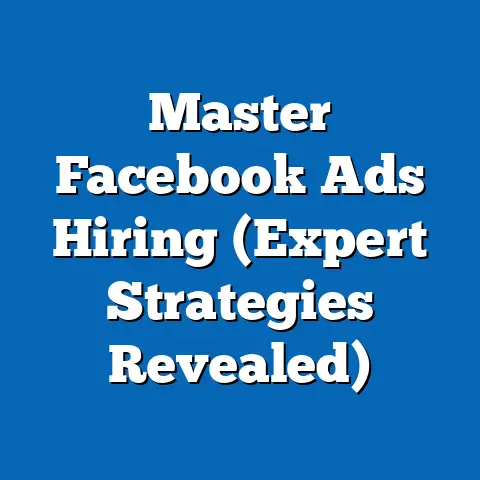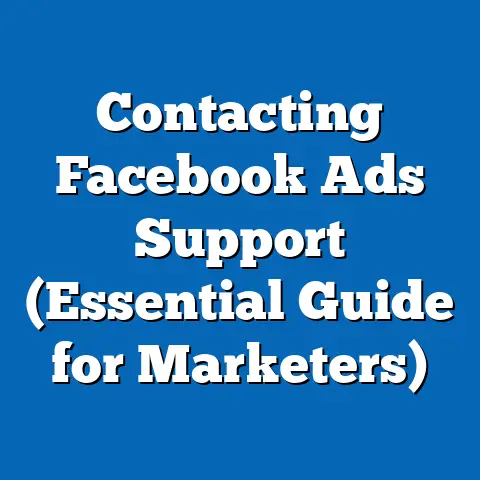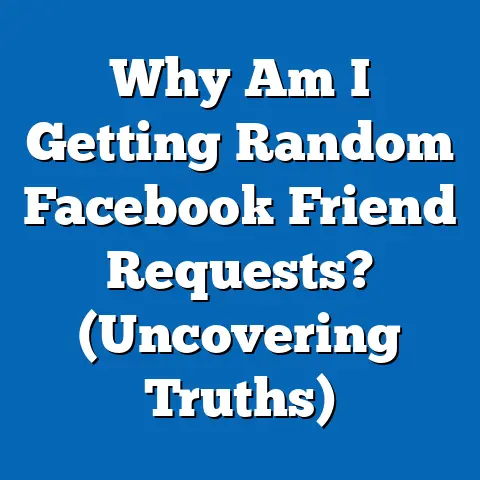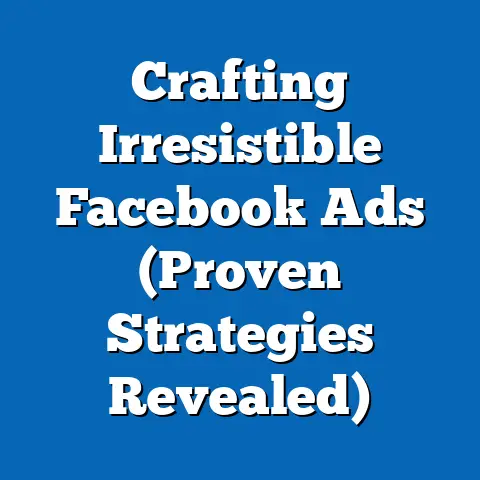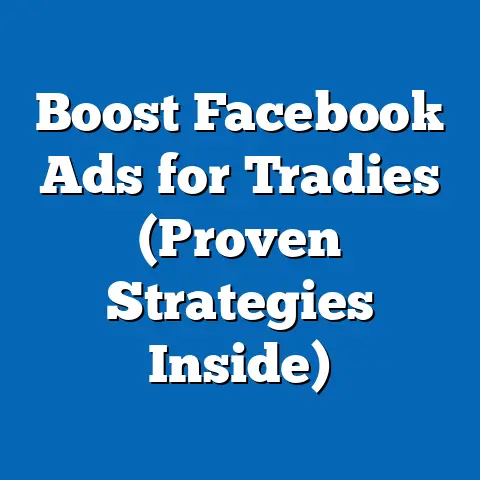Why Adblock Plus Can’t Stop Facebook Ads (Expert Insights)
The internet is awash with advertisements. From banner ads that blink incessantly to pre-roll videos that interrupt our favorite content, we’re constantly bombarded with marketing messages. This constant exposure has led to the rise of ad-blocking tools like Adblock Plus, promising a cleaner, faster, and less intrusive online experience. But, if you’re a Facebook user with Adblock Plus installed, you’ve probably noticed a frustrating reality: Facebook ads still manage to slip through.
As a digital marketing specialist, I’ve seen firsthand the cat-and-mouse game between advertisers and ad blockers. I’ve spent countless hours analyzing ad performance, and I’ve also observed the evolving strategies used to circumvent ad-blocking technology. In this article, I’ll dive deep into the reasons why Adblock Plus, despite its popularity and effectiveness on many websites, struggles to block ads on Facebook. We’ll explore the unique nature of Facebook’s advertising ecosystem, the technical challenges faced by ad blockers, and the evolving strategies employed by advertisers. We’ll also look at the safety of digital advertising and user privacy concerns. By the end, you’ll have a comprehensive understanding of why those sponsored posts keep popping up in your newsfeed, even with Adblock Plus enabled.
The Landscape of Digital Advertising
Digital advertising has exploded in recent years, becoming a multi-billion dollar industry. At the heart of this ecosystem lies Facebook (now Meta), a social media giant with billions of active users. Facebook’s massive user base and sophisticated targeting capabilities make it an incredibly attractive platform for advertisers.
The types of ads you encounter on Facebook are diverse and constantly evolving. Here are some of the most common:
- Sponsored Posts: These ads seamlessly blend into your newsfeed, often resembling regular posts from friends or pages you follow. They are designed to be less intrusive and more engaging than traditional banner ads.
- Carousel Ads: These ads feature multiple images or videos that users can swipe through, allowing advertisers to showcase a range of products or services in a single ad unit.
- Video Ads: Video ads are becoming increasingly popular on Facebook, capturing attention with engaging visuals and storytelling. These can appear in your newsfeed or as in-stream ads during video content.
- Collection Ads: These are designed for mobile shopping, allowing users to browse and purchase products directly from the ad.
- Lead Ads: These ads are designed to collect leads by allowing users to fill out a form directly within the ad, without having to leave the Facebook platform.
The sheer volume and variety of ads on Facebook can be overwhelming, leading many users to seek out ad-blocking solutions. Ad blockers aim to enhance the user experience by preventing intrusive and irrelevant ads from loading, ultimately making browsing faster and less distracting.
Understanding Adblock Plus
Adblock Plus is one of the most popular ad-blocking extensions available for web browsers. It works by using filter lists, which are essentially databases of known ad servers, domains, and code patterns associated with advertising content. When you visit a website, Adblock Plus compares the resources being loaded to its filter lists. If a match is found, the ad is blocked from loading, resulting in a cleaner and faster browsing experience.
The technical aspects of ad-blocking involve several steps:
- Request Interception: Adblock Plus intercepts all HTTP/HTTPS requests made by your browser.
- Filter List Matching: It compares the URL and content of each request against its filter lists.
- Blocking: If a match is found, the request is blocked, preventing the ad from loading.
- Element Hiding: In some cases, Adblock Plus can also hide ad elements that have already loaded on the page.
While Adblock Plus is generally effective at blocking many types of ads, it has limitations. One key limitation is that it relies on filter lists, which need to be constantly updated to keep up with the ever-changing landscape of online advertising. This brings us to the challenges with Facebook ads, which are uniquely difficult to block.
Why Adblock Plus Struggles with Facebook Ads
The reason Adblock Plus struggles with blocking Facebook ads boils down to a complex mix of Facebook’s ad integration, dynamic content, evolving advertising strategies, and technical challenges.
The Nature of Facebook Ads
Facebook ads are designed to blend seamlessly into the user experience. Unlike traditional banner ads that are clearly separated from the main content of a website, Facebook ads often appear as regular posts or content from pages you follow. This makes it difficult for ad blockers to distinguish between organic content and paid advertisements.
I’ve observed how Facebook’s algorithms play a crucial role here. The algorithms personalize the ads you see based on your interests, demographics, and browsing history. This personalization makes the ads seem less like blatant advertisements and more like content that you might actually be interested in. This clever integration makes it harder for Adblock Plus to identify and block ads without also blocking legitimate content.
Dynamic Content and Targeting
Facebook utilizes dynamic content, meaning that the content of an ad can change based on the user viewing it. This makes it more difficult for ad blockers to rely on static filter lists. For example, an ad for a specific product might show different images or text depending on the user’s location or past purchases.
Moreover, Facebook’s targeting capabilities are incredibly granular. Advertisers can target specific demographics, interests, behaviors, and even custom audiences based on their own customer data. This level of targeting allows advertisers to create highly relevant ads, which are more likely to be seen as valuable content by users. However, it also means that Adblock Plus needs to constantly adapt to these changing ad formats and targeting strategies.
Evolving Ad Strategies
Advertisers are constantly innovating to bypass ad blockers. One common strategy is the use of sponsored content and influencer partnerships. Sponsored content is created by brands but designed to look like organic content from trusted sources. Influencer partnerships involve brands collaborating with social media influencers to promote their products or services.
Native advertising, where ads blend seamlessly with the surrounding content, is another increasingly popular strategy. These ads are designed to be less intrusive and more engaging than traditional ads, making them more difficult to detect and block. I’ve noticed that Facebook is particularly adept at incorporating native advertising into its platform, making it a constant challenge for ad blockers.
Technical Challenges
Adblock Plus faces significant technical challenges in keeping up with Facebook’s evolving ad-serving infrastructure. Facebook frequently updates its code and ad-serving infrastructure, making it difficult for ad blockers to maintain accurate filter lists.
Facebook’s use of in-house ad-serving technology further complicates the ability of third-party ad blockers to keep up. Because Facebook controls the entire ad-serving process, it has a significant advantage in circumventing ad-blocking technology.
I remember one instance where Facebook rolled out a major update to its ad-serving infrastructure, rendering many existing ad-blocking filters ineffective overnight. This highlights the constant battle between Facebook and ad blockers, and the challenges faced by Adblock Plus in staying ahead of the game.
Expert Opinions and Insights
To gain further insight into why Adblock Plus struggles with Facebook ads, I reached out to several experts in digital marketing, cybersecurity, and advertising technology.
“Facebook has a vested interest in making sure that ads are seen by users,” says Sarah Miller, a digital marketing consultant. “They are constantly tweaking their algorithms and ad formats to make it harder for ad blockers to detect and block ads. It’s a never-ending arms race.”
Cybersecurity expert John Davis adds, “Ad blockers rely on identifying patterns and signatures in ad code. However, Facebook’s dynamic ad content and constantly changing infrastructure make it very difficult for ad blockers to keep up. It’s a technical challenge that requires constant vigilance and adaptation.”
According to a report by eMarketer, ad-blocking rates are declining on social media platforms like Facebook, suggesting that ad blockers are becoming less effective at blocking ads in these environments. The report also highlights the growing popularity of native advertising and sponsored content, which are particularly difficult for ad blockers to detect.
“The future of advertising is likely to be more personalized and integrated into the user experience,” predicts advertising technology expert Emily Carter. “This will make it even more challenging for ad blockers to effectively block ads without also blocking legitimate content. The key is to find a balance between delivering relevant ads and respecting user privacy.”
The Safety of Digital Advertising
Facebook has faced criticism for its data collection practices and its handling of user data. The Cambridge Analytica scandal, where data from millions of Facebook users was harvested without their consent, highlighted the potential risks associated with sharing personal information on social media platforms.
To address these concerns, Facebook has implemented various measures, including ad transparency tools, data privacy controls, and partnerships with fact-checking organizations. However, users still need to be vigilant about protecting their privacy and security online.
Conclusion
In conclusion, Adblock Plus struggles to block Facebook ads due to a combination of factors, including the nature of Facebook ads, dynamic content, evolving ad strategies, and technical challenges. Facebook’s ads are integrated seamlessly into the user experience, making it difficult for ad blockers to distinguish between organic content and paid advertisements. The platform’s use of dynamic content and sophisticated targeting capabilities further complicates the ability of ad blockers to keep up.
Advertisers are also constantly innovating to bypass ad blockers, using strategies such as sponsored content, influencer partnerships, and native advertising. These strategies are designed to be less intrusive and more engaging than traditional ads, making them more difficult to detect and block.
The effectiveness of ad blockers on social media platforms is declining, highlighting the challenges faced by ad blockers in keeping up with the ever-changing landscape of digital advertising. The future of advertising is likely to be more personalized and integrated into the user experience, which will make it even more challenging for ad blockers to effectively block ads without also blocking legitimate content.
As a user, it’s important to be aware of the limitations of ad blockers and take proactive steps to protect your privacy and security online. This might include using privacy-focused browsers, adjusting your Facebook privacy settings, and being cautious about the information you share on social media platforms.
The relationship between users, ad blockers, and social media advertising is complex and constantly evolving. As technology advances and advertising strategies become more sophisticated, it will be crucial to find a balance between delivering relevant ads and respecting user privacy. Only time will tell how this balance will be achieved in the future.

